

A Quick Guide to Adjustable Circuit Breaker

Table of Contents
Circuit breakers are an integral part of any electrical system. A circuit breaker will trip or stop the flow of electricity if a current reaches a certain overload or overcurrent setting or if there’s a short circuit. While basic circuit breakers trip at a set voltage, adjustable circuit breakers allow you to change the trip curve, making it a more versatile device in your system.
Below, we’ll cover the basics of adjustable trip circuit breakers and some tips for use, maintenance, and troubleshooting.
What is an Adjustable Trip Circuit Breaker?
An adjustable trip circuit breaker lets you adjust the parameters for currents and short circuits. While there are electronic circuit breakers that allow for several customizations, you can change the setting on adjustable trip circuit breakers manually.
This type of circuit breaker has several main components—contacts, an arc extinguisher, a trip unit, and a current-adjusting mechanism. Electricity flows through the contacts.
In the event of an overload or short circuit, a trip unit will open the contacts. This interrupts the flow of electricity. Depending on whether the circuit experiences an overload or a current, a bimetallic strip may heat and open the contact, or an electromagnetic coil may open the contacts.
There is also a small screw or other adjusting device that lets you change the voltage that will activate the trip unit and stop the electrical flow.
How to Set Up and Adjust an Adjustable Circuit Breaker
Unless you are an electrician or have extensive electrical experience, always hire a professional to install your adjustable trip circuit breaker. Once installed, you must set it up to work with your equipment. There are several settings you should consider as you set up your breaker. A proper setup will ensure that your breaker trips properly and keep electricity flowing correctly through your system.
The first setting to consider is continuous amps. This rating is the highest level current the breaker can withstand before tripping. You can adjust continuous amps between 20-100% of the highest current.
The next setting is a long-time delay. This setting lets you specify how long the breaker can withstand an overcurrent without tripping. You may adjust this if there are slight fluctuations that don’t require tripping.
Next is the short-time pickup setting. Sometimes, you need a higher current to pass through the breaker for a short period. This setting allows you to raise the max current temporarily. The short-time delay setting works with short-time pickup. It lets you set the time for the delay, while short-term pickup enables you to adjust the current setting.
Instantaneous pickup works with the previous two settings. It acts as an override and can be set from two to 40 times the continuous amps. When the current reaches the set point, it will automatically trip without delay.
The final setting is for the ground fault pickup. This setting allows you to adjust the breaker to manage a ground fault current . You can set the ground fault pickup between 20% and 70% of the maximum breaker capacity and the device will trip if the ground fault current exceeds this level.
Applications and Suitable Environments for Adjustable Circuit Breakers
You can use adjustable trip circuit breakers in almost any electric setup with energy fluctuations. They also allow for versatility in situations where you need to use two or more products with different rated currents.
A data center is one example of where you can use an adjustable trip circuit breaker. The center needs steady, reliable power, but currents may fluctuate. If a breaker trips unnecessarily and there is a power loss, computers, and servers may fail to function properly.
In systems where motors run intermittently, there may be a momentary current spike as motors turn on. The short-time pickup and delay settings allow you to adjust for these brief power spikes and avoid tripping the breaker.
Another common situation happens with conductors. You may need to run the breaker at a lower setting than its max current with the conductors. Use the continuous amps setting to lower the acceptable max current.
Maintenance and Troubleshooting for Adjustable Circuit Breakers
Regular maintenance ensures that your adjustable circuit breaker works properly, and you’ll get the most life out of the breaker. Clean it daily to remove dirt and dust and inspect for cracks or damage.
When working with a high-voltage breaker, regularly run tests at least once every six months. This allows you to troubleshoot any problem ahead of time or before it gets worse. You can use an analyzer test to check how long the open and close mechanism takes to operate and ensure that the poles are synchronized.
Also, use a micro-ohm meter to monitor the breaker’s resistance and discover any hot spots in your setup. Electrical systems often operate at high temperatures. Extreme heat can lead to the deterioration of wires and other equipment. An infrared inspection allows you to monitor the system for hot spots and replace equipment.
Adjustable circuit breakers provide versatility and efficiency in your electrical system. With less unnecessary tripping, you can streamline your workflow. Through proper settings and regular maintenance, you’ll be able to get the most out of your breaker.
Chint Global specializes in reliable, durable electrical equipment, including a line of adjustable trip circuit breakers. Our NBTL adjustable circuit breaker can help you protect your system against short circuits, overloads, and leakage. You can use it with products with AC currents of 50/60Hz and a rated voltage of 230/240V.
Contact Chint Global today to learn more about our products and to find the one that works for you.
FAQ about Adjustable Circuit Breaker
While both types protect against overcurrents, adjustable breakers allow for modification of trip settings, whereas fixed breakers have a predetermined trip point that cannot be changed.
Yes, incorrect settings can lead to insufficient protection or unnecessary tripping. It’s crucial to understand the load requirements and consult the manufacturer’s guidelines when adjusting.
If the breaker trips often, first verify the trip settings and ensure they match the circuit’s requirements. If the settings are correct, inspect the circuit for overloads or short circuits. If problems persist, consult an electrician or specialist.
Recommend Reading

All You Need to Know about Air Circuit Breakers (ACB)
Table of Contents When a facility has high energy needs, safety becomes an utmost concern. An air circuit breaker (ACB) effectively protects facilities and employees
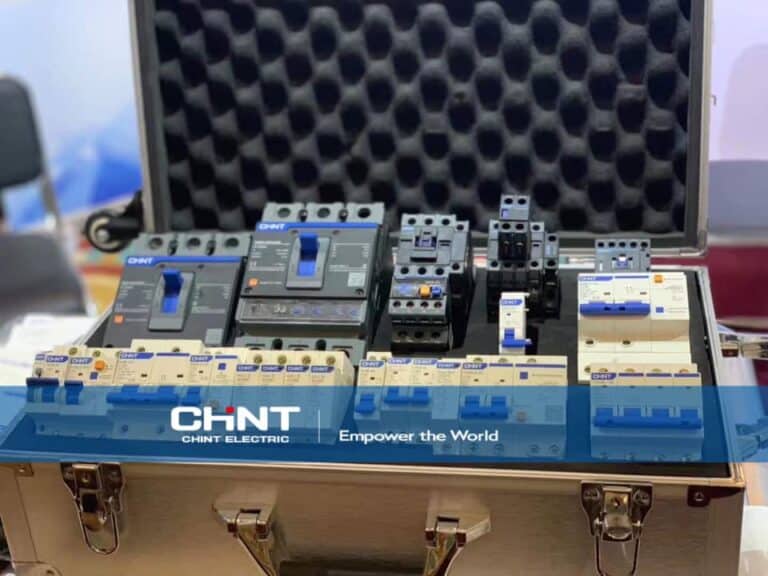
What’s the Difference: Molded Case Circuit Breaker VS Circuit Breaker
Table of Contents Circuit breakers are safety devices that protect electrical systems from overloads and short circuits. Molded Case Circuit Breakers (MCCB) and conventional breakers

You Might Be Interested In

How Do Temperature Monitoring Systems Improve Circuit
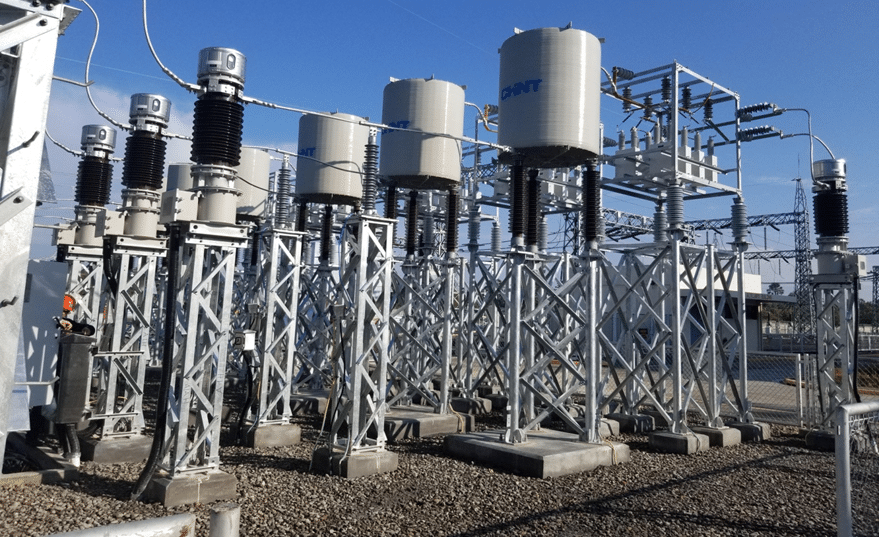
What is an AIS Substation? Components & Advantages

Dust-Proof AC Contactor For Reliable Circuit Protection
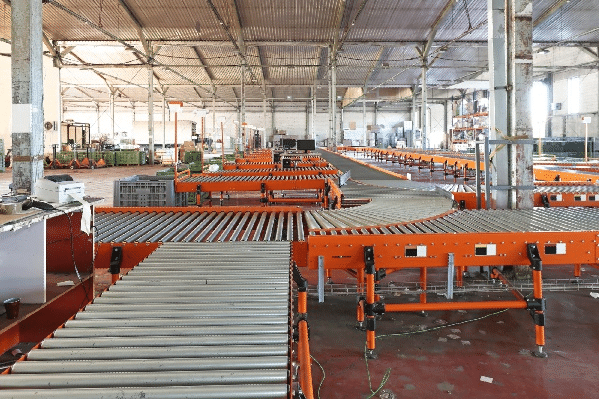
Understand the Applications of Variable Speed Drive (VFD)
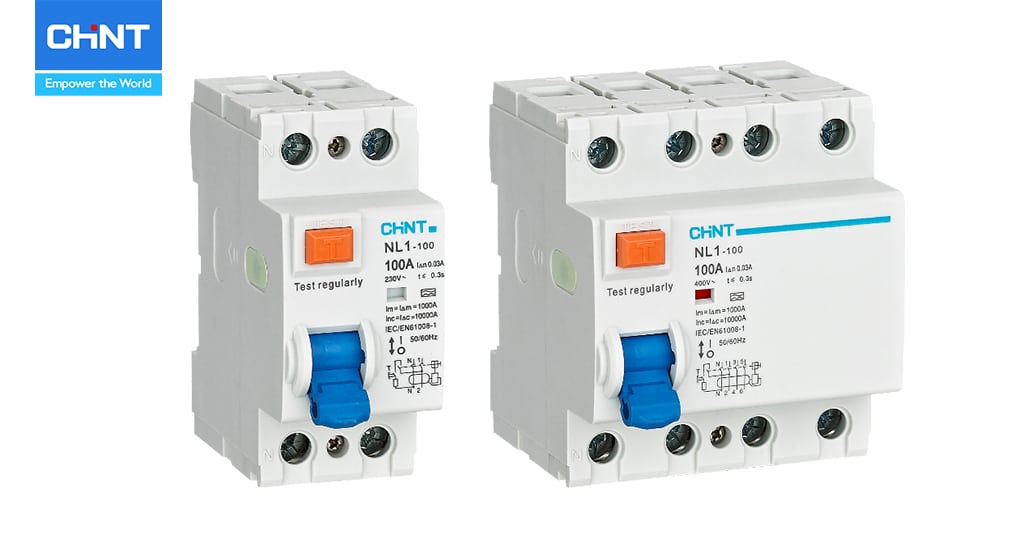
What is the Best Residual Current Operated Circuit Breaker (RCCB)?

What Does An Advanced R&D Laboratory Look Like?
Quick links.
About Us News Center Contact Us Privacy Statement
DOWNLOAD CENTER
ZHEJIANG ICP RECORD NO. 12033679
Copyright 2023 CHINT Group. All Rights Reserved
Tel: 86-21-62877777 Email: [email protected]
Copyright 2022 CHINT Group. All Rights Reserved
Please fill out the form to get a complete report for free. If you have any questions, please contact [email protected] .
- svg]:stroke-primary"> 826K
- svg]:stroke-primary"> 622K
- svg]:stroke-primary"> 246K
- svg]:stroke-primary"> 45K
Why Is My Circuit Breaker Tripping? 4 Potential Problems and Solutions
By: Glenda Taylor , Bob Vila , Evelyn Auer
Updated on Dec 21, 2023 8:55 PM EST
6 minute read
Photo: istockphoto.com
We may earn revenue from the products available on this page and participate in affiliate programs. Learn More ›
Q: Every few hours—sometimes minutes!—my living room and one side of my kitchen lose electrical power. I’ll check the breaker panel and, sure enough, a circuit breaker has tripped…again. Should I call an electrician, or is there a simple DIY fix I can try first?
A: While it’s frustrating when a circuit breaker keeps tripping, they are important safety mechanisms. Designed to shut off the electrical current when something goes wrong, circuit breakers are one of the best ways of protecting a home from an electrical fire. “When a circuit breaker trips, typically it is because we use too much electricity, which causes it to overload and turn off,” says Christopher Haas, expert electrician and owner of Haas & Sons Electric in Millersville, Maryland. For those who need an electrical panels 101 refresher course or aren’t sure how to reset circuit breakers, each breaker has an on/off switch and controls a separate electrical circuit in the home. When a breaker trips, its switch automatically flips “off,” and it must be manually turned back on to restore electricity to the circuit. For those wondering, “Is it dangerous if a circuit breaker keeps tripping?” the answer is that it can be, depending on the source of the problem. An electrician can ultimately deal with the root issue, but a little sleuthing will reveal whether it’s something that’s easily remedied.
In many cases, the cause of a circuit breaking tripping is an overloaded circuit.
A circuit overloads when more electrical current is being drawn through the wires than they can handle, tripping the circuit breaker. If this happens, there may be a few additional signs:
- Buzzing noises coming from outlets
- Devices charging slowly
- Electrical outlets not working
- Flickering lights
- Scorch marks on outlets and light switches
If a circuit breaker keeps tripping in one room, homeowners can test for circuit overload by turning off all the switches in the affected area and unplugging all appliances and devices. After the breaker is flipped back on, the devices can be turned back on one at a time, with homeowners waiting a few minutes in between to see if the circuit remains on. If the breaker trips before all the appliances are turned on, the experiment can be repeated, this time turning them on in a different order. It may be necessary to do this several times to find out how many appliances can be operated at once before the circuit overloads.
“As a short-term solution, you can unplug unnecessary appliances to prevent tripping circuit breakers. You may still get some trips, but you can limit them by unplugging devices that you don’t need to use,” advises Dan Mock, vice president of operations at Mister Sparky , an electrical company with 90 locations in the U.S. The best long-term solution, however, is to pay an electrician for the cost to rewire the house and add additional circuits. The cost to replace an electrical panel is about $1,274 on average.
Other times, the issue may be caused by a short circuit.
A “short” circuit means that two wires that should not be coming into contact are inadvertently touching, triggering a sudden surge of electricity through the wires. A short can occur in an outlet, a switch, or within an appliance if wires are loose or have been chewed through by mice or pets. Some signs of a short circuit include:
- Popping sounds
- Discolored outlets or switches
- Burning smells
Testing to see if an appliance has a short is similar to testing for an overloaded circuit. When an appliance that has a short in its wiring is turned on, it will immediately trip the circuit. Homeowners can also try plugging it into an outlet in a different room. If the breaker for that room trips, there’s a short in the appliance (if it’s unclear what breaker goes to what room, the breaker can be identified with one of the best circuit breaker finders ). Electrical shorts can be a major fire hazard, so it’s a good idea to call a licensed electrician for this circuit breaker repair. It’s wise to stop using the outlet or appliance until a pro takes care of the problem.
Another potential cause of a circuit breaker tripping is a ground fault.
A ground fault occurs when the electricity running through a home’s wiring diverts from the wiring loop and travels to the ground, usually due to faulty wiring or water infiltration in an outlet or switch box. Water is a conductor, which is why walking through puddles is often listed as something not to do in a power outage in case of downed power lines. Once water makes contact with wires, electricity can jump from the wiring loop and follow the water trail. This creates a surge in electricity leading to a tripped circuit breaker. If a person comes in contact with the electricity that is on its way to the ground, this can result in electrocution. Homeowners may notice a few signs of a ground fault, including:
- Tripped GFCI (ground fault circuit interrupter) outlets;
- A burning smell coming from an outlet; and
- Lights flickering.
Newer electrical breakers have features designed to protect against the danger of ground faults. According to Haas, “Ground fault breakers sense electricity going to earth as opposed to going through the wires of the circuit. You’ll find [these] for bathrooms, kitchens, garages, exteriors, and basements.” GFCI outlets are another safety feature that shut off the electric current within a fraction of a second of sensing a ground fault.
If a ground fault is the problem, the cause of the errant water must be discovered and repaired, and any damaged wiring must also be replaced. It’s also a good idea to install GFCI outlets in rooms where water is commonly used. A GFCI outlet costs $210 on average.
Sometimes a bad or worn-out circuit breaker can be the culprit.
In some cases, the circuit breaker itself may be faulty. Breakers that are old, damaged, or were installed incorrectly may trip frequently for no apparent reason. Alternatively, faulty breakers may not trip when they are supposed to, leaving the home at risk of electrical fire. Some signs of a bad circuit breaker include:
- The circuit breaker getting hot and tripping frequently;
- The circuit breaker won’t reset;
- It has been over 10 years since the breaker was last serviced; and
- The breaker has scorch marks.
An important electrical safety tip to keep in mind is that resetting a breaker over and over again can cause what is called an arc flash, which is a small electrical explosion that can be deadly. If resetting the breaker once does not remedy the issue, it’s a good idea for the homeowner to hire an electrician near them who knows how to replace a circuit breaker safely. Mock warns, “Don’t take any chances with circuit breakers. Instead, call a licensed electrician who knows the safe ways to replace breaker boxes, upgrade circuits, and diagnose potential electrical problems in your home.” Wiring a breaker box is a job to leave to an experienced electrician.
A professional electrician can help determine the specific cause of a frequently tripping circuit breaker.
Most circuit breaker problems—aside from those explained in the sections above—will need to be inspected and addressed by a licensed electrician. According to the Electrical Safety Foundation International (ESFI) , each year “thousands of people in the United States are critically injured and electrocuted as a result of electrical fires, accidents, [or] electrocution in their own homes.” While homeowners may be tempted to save on electrician costs by attempting circuit breaker replacement or repair themselves, electrical work is not suitable for casual DIYers. “Yes, you have to pay, but you can save many hours of head-scratching by hiring an electrician. Electricians will also have all the right tools for diagnosing and repairing the circuit,” Haas adds. “Lastly, they will come with a warranty/guarantee should something arise, and they will typically return at no additional cost.”
The Government Is Paying People to Upgrade Their Home Comfort, Here’s Why The Government Is Paying People to Upgrade Their Home Comfort, Here’s Why
By: Tony Carrick
The 20 Best Lawn Care Products for a Lush and Healthy Lawn The 20 Best Lawn Care Products for a Lush and Healthy Lawn
By: Deirdre Mundorf
How to Calculate Circuit Breaker Trip Settings
Each circuit breaker in your breaker panel is labeled with the maximum amperage (current) capacity for that circuit. This may differ among circuits, so always check each breaker's capacity individually when calculating the electrical load that will cause that breaker to trip. Standard household circuits in the U.S. are 120 volts, but some circuits have double that capacity for appliances such as stoves and air conditioners. These breakers have 240-volt capacities and will be approximately twice the size of 120-volt breakers. Wattage is the easiest measure of power load to calculate and monitor so you don't accidentally trip your breakers.
Advertisement
Look for the amperage notation on the breaker switch. This will generally be 15 or 20. Also look for the voltage notation, which may be on the breaker switch as well, and will be 120 or 240. If you cannot locate the voltage, assume that breakers that take up one panel slot are 120 volts and breakers that take up two slots are 240 volts.
Video of the Day
Multiply the amps by the volts. In most circuits, this will be 20 x 120 = 2400 or 15 x 120 = 1800. The number resulting from this equation is the maximum wattage load you can place on the circuit before tripping the breaker.
Apply the same calculation to 240-volt circuits. For example, a 240-volt circuit with a 30-amp capacity would allow 7200 watts (30 x 240 = 7200).
Check the wattage for all electrical fixtures and appliances on the circuit. If the total wattage is over your maximum calculation, the breaker will trip.
Report an Issue
Screenshot loading...
- Practical Electrical
- Transformer
- Transmission
- Induction motor
- Electronics
- Generator Protection

MCCB Current Setting | I2t | Ir | Isd | Ii | Ig Explanation
Mccb current setting:.
MCCB is nothing but a molded case circuit breaker. It is designed to operate all indoor application. MCCB contains the following protection such as over current, short circuit, Instantaneous and earth fault. During loading condition all the protection will be enabled automatically. The current reference will be come from the phase current transformer, which will be placed inside of the MCCB. However, in this article we are going to see the MCCB current setting and how to set MCCB.
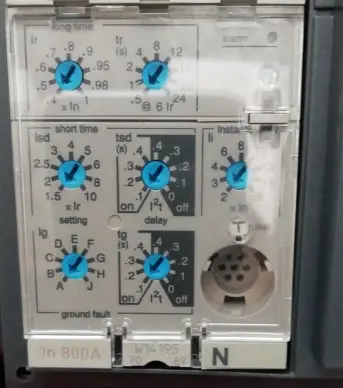
MCCB Current Rating:
Refer the picture of a 800 A MCCB trip Unit. In that, I n notates the nominal per phase current of the MCCB. Also, in this type of current setting, you cannot set the over current limit for each phase of the MCCB. Once You set in that, it considers all three phase. Lets see….the common current setting value.
[wp_ad_camp_1]
Over current Protection (Ir):
It is denoted By Ir. Here sub-ordinate r mentions that rated current. This the first dial. It starts from 0.4 to 1.0 which means 40% to 100% of the Nominal current. Typically,

In Our case we have set the MCCB to operate the over current at 320Amps. Also, these type of over current protection are said to be a definite time protection.
Note: For circuit-breakers equipped with non-adjustable overcurrent-trip relays, Ir = In
Over current protection time setting (tr):
It is denoted by tr. In this dial, we set the time limit for the over current protection as we said above. In our case we have set 0.5 sec. It means, the MCCB allows 320+ Amps for just 0.5 sec only. Beyond that limit MCCB trips the circuit. i.e if you have 319 Amps also, it does not count the time, the MCCB become inoperative.
Also another instruction that you can see, @6 Ir, It means the MCCB has overcurrent of 6 times of the rated set current, then it trips immediately Without time delay even without fault.
Short Circuit Protection (Isd):
Current setting:
Short circuit protection is denoted by (Isd). Sd is s short form of short circuit adjustable protection. In our case you can calculate that, Isd = 1.5 Ir. Here you should consider the over current setting Ir value Not a nominal current value of the MCCB (In). because of when increasing in over current, simultaneously, it increases the short circuit current rating also. In our case Isd= 1.5 * 320 A = 500Amps. The MCCB will trip the circuit when the current increases to 500 Amps with the definite time delay.
[wp_ad_camp_2]
Short Circuit Time Delay (Tsd):
The time delay of short circuit current that MCCB allows to flow beyond that limit MCCB trip the circuit or in simple words, MCCB short circuit current time delay. In our case, Tsd is 0.1 sec. It means the MCCB allows 500 Amps short circuit current for 0.1 sec.
In this You can see that, the time setting is divided into two-time delay, here white color is called trip setting and black color is called alarm setting. If you accidently set the tsd value in alarm dial means, the MCCB do not trips the circuit under any short circuit fault condition. Instead it gives signal alarm only.
[wp_ad_camp_4]
Also 0 sec means switch-off the protection.
I 2 t Protection (i square t protection)
Another one thing that, you should note that I 2 t Protection. I 2 t protection means the trip unit consider the equipment temperature. The Value of the I 2 t can be calculated by
I 2 t = k 2 S 2
which shows that the allowable heat generated is proportional to the squared cross-sectional-area of the conductor. where
t = Duration of short-circuit current (seconds)
S = Cross sectional area of insulated conductor (mm2)
I = Short-circuit current (A r.m.s.)
k = Insulated conductor constant (which can be calculate using this )
Instantaneous current setting (Ii):
It is denoted by Ii. Subordinate i means instantaneous. Instantaneous fault means the current goes high in very short period. To protect the circuit against such fault these instantaneous protection is used. In our case Ii = 2 * In => Ii= 2* 800Amps => 1600Amps.
Ii protection does not have time delay, typically it operates at 0 sec when the fault occurs. But in practical case 0 sec is not possible and it takes 30 to 50 ms for relay processing time.
Earth Fault Protection or ground fault protection (Ig):
Any one or more phases contact with the ground conductor; such fault is called Earth fault or ground fault. It is denoted by Ig. In our case, it set in Position A., It means the manufacturer already defined the value of A approx. 100 to 200 Amps. Also the remaining position (B, C, D, …. J ) also mentions the same. Each dial has its own tripping amount of current.
Time setting for ground fault:
It is denoted by Tg. Small g means ground fault. In our case, the time delay is 0.1 sec. The MCCB allows 0.1 sec time delay beyond that limit, the MCCB trips. Remember that, the time setting have two dial as we said in short circuit time relay (alarm and trip).
Thanks You guys we have studied about the MCCB current setting.
RELATED ARTICLES MORE FROM AUTHOR

What is MPCB, Working, Construction, Types, Application
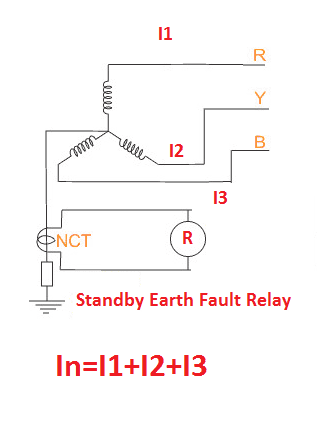
Standby Earth Fault Relay 51N, Operation, Construction
![What is Normally Open & What is Normally Closed [Video Included] What is NO and NC](https://www.electrical4u.net/wp-content/uploads/2020/09/What-is-NO-and-NC-218x150.png)
What is Normally Open & What is Normally Closed [Video Included]
What is busbar current carrying capacity calculation 5 types of busbar.

AC DC Full Load Current Calculation Formula

Top 6 Difference Between Copper and Aluminium Cables
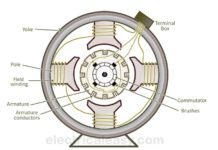
DC GENERATOR
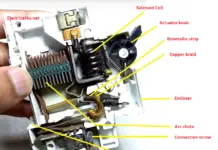
What is MCB, Construction, Working, Types of MCB B, C, D, K ?
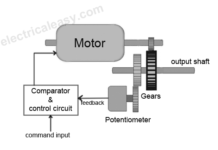
ServoMotor | Basic Working Principle of ServoMotor
What is Crawling of Induction Motor & How to Avoid it?
What is Step potential and Touch Potential and Calculation
What is Harmonics, Creation, Elimination in Power system
“Also another instruction that you can see, @6 Ir, It means the MCCB has overcurrent of 6 times of the rated set current, then it trips immediately Without time delay even without fault”
Good information on this page but are you sure the above statement is correct ?
The dial would seem to suggest that the delay bands are labelled in seconds of over current at six times the (Ir) rating i.e. in the above example Ir is set to 320A * 6 = 1920A. So overcurrent trip within 0.5 seconds @ 1920A.
Good info, but in: “Also another instruction you can see, @ 6 Ir, it means that the MCCB has an overcurrent of 6 times the rated current set, then it trips immediately without time delay even without faults” is it correct? If it is, the high setting for overcurrent protection would not make sense.
Sir, I would like to thank you from my bottom of heart for your illustrious explanations.
LEAVE A REPLY Cancel reply
Save my name, email, and website in this browser for the next time I comment.


How to Determine the Trip Settings for Circuit Breakers
Quck answer
To calculate circuit breaker trip settings, follow these steps:
1. Determine the maximum current the circuit can handle.
2. Calculate the short circuit current available at the point of installation.
3. Determine the desired trip time for the circuit breaker.
4. Use the manufacturer’s trip curve to find the trip multiplier for the desired trip time.
5. Multiply the maximum current by the trip multiplier to get the circuit breaker trip setting.
Remember to consider factors like ambient temperature and conductor size when calculating the maximum current. It’s also important to consult the manufacturer’s documentation for specific guidelines and recommendations.
Every circuit breaker in your breaker panel has a maximum amperage (current) capacity specified on it. This capacity may differ from circuit to circuit, so it is important to check each breaker’s capacity individually when calculating the electrical load that will cause that breaker to trip. Standard household circuits in the United States have 120 volts, but some circuits have double that capacity for appliances like stoves and air conditioners. These breakers have 240-volt capacities and are roughly twice the size of 120-volt breakers. To avoid tripping your breakers, wattage is the easiest measure of power load to calculate and keep track of.
Find the amperage notation on the breaker switch. This is usually either 15 or 20. Also, look for the voltage notation, which may be on the breaker switch too, and will be either 120 or 240. If you can’t find the voltage, assume that breakers that occupy one panel slot are 120 volts, and breakers that occupy two slots are 240 volts.
Multiply the amperes by the volts. In most circuits, this will be 20 x 120 = 2400 or 15 x 120 = 1800. The number you obtain from this equation is the maximum wattage load you can put on the circuit before tripping the breaker.
Use the same calculation for 240-volt circuits. For instance, a 240-volt circuit with a 30-amp capacity would allow for 7200 watts (30 x 240 = 7200).
Check the wattage of all electrical fixtures and appliances on the circuit. If the total wattage exceeds your maximum calculation, the breaker will trip.
1. What are circuit breaker trip settings and why are they important?
Circuit breaker trip settings refer to the specific conditions under which a circuit breaker will trip or disconnect the electrical circuit it is protecting. These settings are important because they determine the level of protection provided by the circuit breaker, ensuring that it operates correctly in the event of an overload or fault.
2. How do circuit breakers work?
Circuit breakers work by detecting abnormal electrical conditions, such as excessive current or short circuits, and interrupting the flow of electricity to prevent damage to the circuit and connected devices. When the current exceeds the trip setting, the circuit breaker trips and opens the circuit, breaking the electrical connection.
3. What factors should be considered when calculating circuit breaker trip settings?
Several factors need to be considered when calculating circuit breaker trip settings, including the maximum current the circuit can handle, the type of load connected to the circuit, the time required for the circuit breaker to trip, and the coordination with other protective devices in the circuit.
4. How can I determine the maximum current for a circuit?
The maximum current for a circuit can be determined by considering the ampacity of the conductors used in the circuit, the temperature rating of the conductors, and any derating factors that may apply. It is essential to ensure that the circuit breaker’s trip setting is equal to or slightly higher than the maximum current to provide adequate protection.
5. What is the difference between instantaneous trip and thermal trip settings?
Instantaneous trip settings refer to the current level at which the circuit breaker will trip immediately, providing instantaneous protection. Thermal trip settings, on the other hand, determine the time it takes for the circuit breaker to trip based on the duration of the current overload. Both settings are important to ensure proper protection.
6. How can I calculate the trip setting for a circuit breaker?
To calculate the trip setting for a circuit breaker, you need to consider the maximum current, the type of load, and the desired level of protection. You can consult the manufacturer’s guidelines and use industry-standard calculation methods to determine the appropriate trip setting for your specific application.
7. Can circuit breaker trip settings be adjusted?
Yes, circuit breaker trip settings can often be adjusted within a certain range to meet the specific requirements of an electrical system. However, it is crucial to ensure that any adjustments are made following the manufacturer’s instructions and in compliance with applicable electrical codes to maintain the circuit breaker’s proper operation and safety.
8. How often should circuit breaker trip settings be checked?
Circuit breaker trip settings should be checked periodically to ensure that they are still appropriate for the system’s needs. Any changes in the electrical system, such as adding new loads or modifications, may require a reassessment of the trip settings to ensure continued protection and proper operation.
- How to Reduce Current Capacity of Conductors
- Stab-Lok Circuit Breakers: Important Information
- Constructing a Short and Curved Brick Wall
- Instructions for Connecting a 3 Phase Motor
- How to Repair Short Circuits
- How to Determine if a Circuit Breaker in a Car is…
- How to Determine Conduit Size for Electrical Wiring
- Step-by-Step Guide to Installing an AFCI Breaker
- How to Determine the Corresponding Circuit Breaker…
- Instructions for Calculating Stair Flooring
- Instructions on How to Compute Shed Materials
- How to Determine the Lighting Needs for a Room
- How to Connect an Electrical Outlet with Red, White,…
- п»їGuide to Adjusting Temperature on Honeywell Thermostat
- How to Change the Temperature on a Moen Anti-Scald…
- Calculating Brick Pavers for Your Patio
- How to Estimate the Number of Bricks Needed for a Wall
- п»їHow to Adjust the Temperature on a Moen Shower
Leave a Comment Cancel reply
Save my name, email, and website in this browser for the next time I comment.
- Français - French (Canadian)
- Español - Spanish (Mexican)
- Please Note
- 100 Millisecond, Arc-Rated MCC, Upstream Over-Current Protection Device (OCPD) Requirements
- Schneider Electric Literature Lists
- Section 2—Safety Precautions
- Receiving the MCC
- Equipment Needed
- Plug-In Units
- Storing the MCC
- Space Requirements
- Aligning the MCC
- Positioning the MCC
- Joining Corner Channels
- Joining Section Side Channels
- Non-Seismic Applications
- Introduction
- Responsibility for Mitigation of Seismic Damage
- Tie-Down Points for Rigid, Floor-Mounted Equipment
- Anchorage Assembly Instructions
- Welded Anchorage
- Seismic Tie-Down Access for ArcBlok with Bottom-Feed, Line-Side, Isolation Cable Vault
- Securing Structures to Wall—Seismic Hazard Designated Locations
- Splice Gaskets for Type 1 Gasketed, Type 1 Sprinkler-Resistant, and Type 12 Enclosures
- Splicing Without P Gasketing
- Splice to Existing Left
- Splice to Existing Right
- Joining to the Left Side of an Existing Type 3R MCC Enclosure.
- Joining to the Right Side of an Existing Type 3R MCC Enclosure
- Joining Type 3R Sections
- Joining Type 1 Sprinkler-Resistant Sections
- Power Bus Splicing MCCs with Single Bar/Phase Splice Kit (600 A and 800 A, Copper Horizontal Bus, 65,000 A Short Circuit or Less, Shipped after August 2012)
- Power Bus Splicing MCCs with Multiple Bar/Phase Splice Kit
- Splicing Power Bus in Type 3R Enclosures
- Power Bus Splicing of 2500 A Bus with 100,000 A Short Circuit Rating
- Splicing Offset or 3000/3200 A Horizontal Bus (Left Side of Structure Only)
- Ground Bus Splicing for Type 1, Type 12, and Type 3R
- Ground Bus Splicing for Bottom-Feed ArcBlok Main Sections
- Conductor Entry for Line-Side Isolation Cable Vaults with ArcBlok
- Incoming Cable Lacing Instructions—Line-Side Isolation Cable Vault
- Vent Hood Installation
- Standard Low Voltage MCC Pull Box
- Vented Low Voltage MCC Pull Box
- Line-Side Isolation, Low Voltage MCC Pull Box
- Sprinkler-Resistant Low Voltage MCC Pull Box
- Load and Control Wiring
- Crimp Lug Cable Assembly for Cabled Disconnect Unit Installation
- Cable Connection Torque Values
- Component Instructional Information
- Modifying Fuse Clip Locations
- Pre-operation Checklist
- Energizing the MCC
- Inspecting the Enclosure
- Initial Maintenance
- Periodic Inspection and Maintenance
- Maintaining the Control Unit
- Removing the Control Unit
- Removing the Compac ™ 6 Control Unit
- Tests and Maintenance Performed with the Control Unit Removed
- Insulation Test
- Maintenance After an Electrical System Event Has Occurred
- Water-Soaked MCCs
- Inspection and Cleanup of Clean Water Sprayed or Splashed MCC
- Motor Logic Retrofit Applications
Adjusting Mag-Gard, PowerPacT, or TeSys Magnetic Trip Setting
- Adjusting PowerPacT M- and P-Frame Circuit Breakers in Motor Control Center Motor Starter Units
- iMCC Overview
- Networks/Communications Overview
- Connecting the iMCC Cabling System
- Network Cabling
- Cables Between Shipping Splits
- Load Cables
- Communication Networks
- Bridges/Repeaters
- Terminating Resistors
- Direct Cable Connection
- MCC Structure
- iMCC Communications
- Motor Logic Plus Local Programming
- Motor Logic Plus Remote Programming
- TeSys ™ T Motor Management Controller
- TeSys T Retrofit Applications
- Applications Requiring Turns
- Configuring with HMI
- Configuring with PowerSuite ™ Software
- Configuring with SoMove Software
- PowerLogic ION Meter
- PowerLogic ™ Power Meter Series 800, 5500, 8000
- PowerLogic Circuit Monitor
- Altivar ™ 61/71
- Altivar 630/930
- Altistart ™ 48
- Altivar 480
- PowerPacT ™ Circuit Breakers with MicroLogic ™ Trip Units
- Device Addressing
- Network Security
- Ordering Information
- De-Energizing Equipment and Identifying Unit Type
- Modifying Removable Units
- Modifying Fixed Units
- Installing Additional MCC Units
- Section 11-Troubleshooting
- Section 12—Insulation Resistance
- Section 13—Thermal Overload Unit Selection
- Section 14—Circuit Breaker and Fusible Switch Replacement
- Section 15—Installation and Maintenance Log
- Installation
- Horizontal Wireway Cover
- Horizontal Bus Barriers
- Units Below the Topshelf
- Existing Brackets: 15 in. (381 mm) Deep MCC Only
- Retrofit Brackets and Endcaps
- Bottom Track and Bottom Retrofit Bracket
- Removal (when required)
- Replace Components
- Installation—Style 1
- Removal—Style 1
- Installation—Style 2
- Removal—Style 2
- Inserting a Unit
- Removing a Unit
- Appendix D—Technical Support
For the best experience of this site, please enable Javascript for the www.productinfo.schneider-electric.com domain.
The adjustable magnetic trip setting is factory-set at Lo for Mag-Gard Motor Circuit Protectors. For PowerPacT H- and J-frame, and TeSys BV4 Motor Circuit Protectors, where applicable, the Full Load Amp Setting (FLA) is factory set to the lowest setting. The instantaneous trip setting (Im) is factory set to the Auto 1or the lowest instantaneous trip setting. For PowerPacT P-frame Motor Circuit Protectors (ET1.0M electronic trip unit), the adjustable instantaneous trip setting is factory set to its lowest position. These settings may have to be adjusted for proper motor start-up. For Mag-Gard, PowerPacT, and TeSys BV4 Motor Circuit Protectors, refer to the magnetic trip set-point limits outlined in the applicable national installation codes. For PowerPacT H- and J-frame Motor Circuit Protectors, refer also to instruction bulletin 48940–260–01, Motor Circuit Protector (MCP) Settings For PowerPact H- and J-frame Motor Circuit Protectors .
To access the MagGard trip or TeSys BV4 adjustment dial:
Turn off all power supplying this equipment before working on or inside the equipment, and follow lockout/tagout procedures. Always use a properly rated voltage sensing device to confirm the power is off.
Place the unit handle in the OFF position and open the door.
While pushing the door interlock lever forward, trip the circuit breaker by pressing the test button (see Mag-Gard and TeSys BV4 Magnetic Trip Adjustment ). The disconnect handle will automatically move up, allowing access to the adjustment dial.
Mag-Gard and TeSys BV4 Magnetic Trip Adjustment
After obtaining the motor full load current from the motor nameplate, select an adjustable trip setpoint to test start the motor. Further adjustments may be required because of motor load characteristics. Refer to applicable national installation codes for permissible setpoints.
After adjusting the trip setting, reset the circuit breaker by moving the disconnect handle to the ON position and then to the OFF position.
To access the PowerPacT H- and J-frame Full Load Amps (FLA) and Instantaneous Trip setting (Im) dials:
PowerPacT H- and J-frame Magnetic Trip Adjustment
To set the FLA and Im dials, refer to instruction bulletin 48940–260–01, Motor Circuit Protector (MCP) Settings For PowerPact H- and J-frame Motor Circuit Protectors .
Select replacement MagGard, PowerPacT, or TeSys BV4 Motor Circuit Protectors for MCCs using the voltage and current ratings listed in the Model 6 MCC Catalog (8998CT9701) in addition to the Mag-Gard, PowerPacT, or TeSys selection tables in the Schneider Electric Digest.
These circuit breakers are suitable for motors with locked-rotor indicating code letters based on applicable national codes and standards. For other motors, consult your local Schneider Electric field sales representative.
To access the PowerPacT L-frame trip adjustment dial (Isd):
Set the overcurrent trip setting by adjusting the switch labeled "Isd" as shown in PowerPacT L-frame Instantaneous Trip Adjustment . The dial is labeled in amperes. Refer to instruction bulletin 48940–310-01, MicroLogic™ 0, 1, 2, and 3 Trip Units—User Guide , for more information on trip settings.
PowerPacT L-frame Instantaneous Trip Adjustment
After obtaining the motor full load current from the motor nameplate, select an adjustable trip set-point to test start the motor. Further adjustments may be required because of motor load characteristics. Refer to applicable national installation codes for permissible set-points.
To access the PowerPacT P-frame Instantaneous Trip setting (Im) dial:
Make adjustments as follows:
For ET1.0I and ET1.0M electronic trip units, adjust instantaneous trip (Ii) by adjusting switch A (see PowerPacT P-frame Instantaneous Trip Adjustment ). Switch settings are multiples of the frame rating.
PowerPacT P-frame Instantaneous Trip Adjustment
For P-frame MCPs with other Micrologic electronic trip units, see instruction bulletin 48049-148-05, PowerPact™ P-Frame and NS630b–NS1600 Circuit Breakers
Show QR code for this page
Was this helpful?
Contact Information
Legal information.
The information provided in this document contains general descriptions, technical characteristics and/or recommendations related to products/solutions.
This document is not intended as a substitute for a detailed study or operational and site-specific development or schematic plan. It is not to be used for determining suitability or reliability of the products/solutions for specific user applications. It is the duty of any such user to perform or have any professional expert of its choice (integrator, specifier or the like) perform the appropriate and comprehensive risk analysis, evaluation and testing of the products/solutions with respect to the relevant specific application or use thereof.
The Schneider Electric brand and any trademarks of Schneider Electric SE and its subsidiaries referred to in this document are the property of Schneider Electric SE or its subsidiaries. All other brands may be trademarks of their respective owner.
This document and its content are protected under applicable copyright laws and provided for informative use only. No part of this document may be reproduced or transmitted in any form or by any means (electronic, mechanical, photocopying, recording, or otherwise), for any purpose, without the prior written permission of Schneider Electric.
Schneider Electric does not grant any right or license for commercial use of the document or its content, except for a non-exclusive and personal license to consult it on an "as is" basis.
Schneider Electric reserves the right to make changes or updates with respect to or in the content of this document or the format thereof, at any time without notice.
To the extent permitted by applicable law, no responsibility or liability is assumed by Schneider Electric and its subsidiaries for any errors or omissions in the informational content of this document, as well as any non-intended use or misuse of the content thereof.
© 1999 – 2022 Schneider Electric
China set to launch high-stakes mission to moon's 'hidden' side
- Medium Text
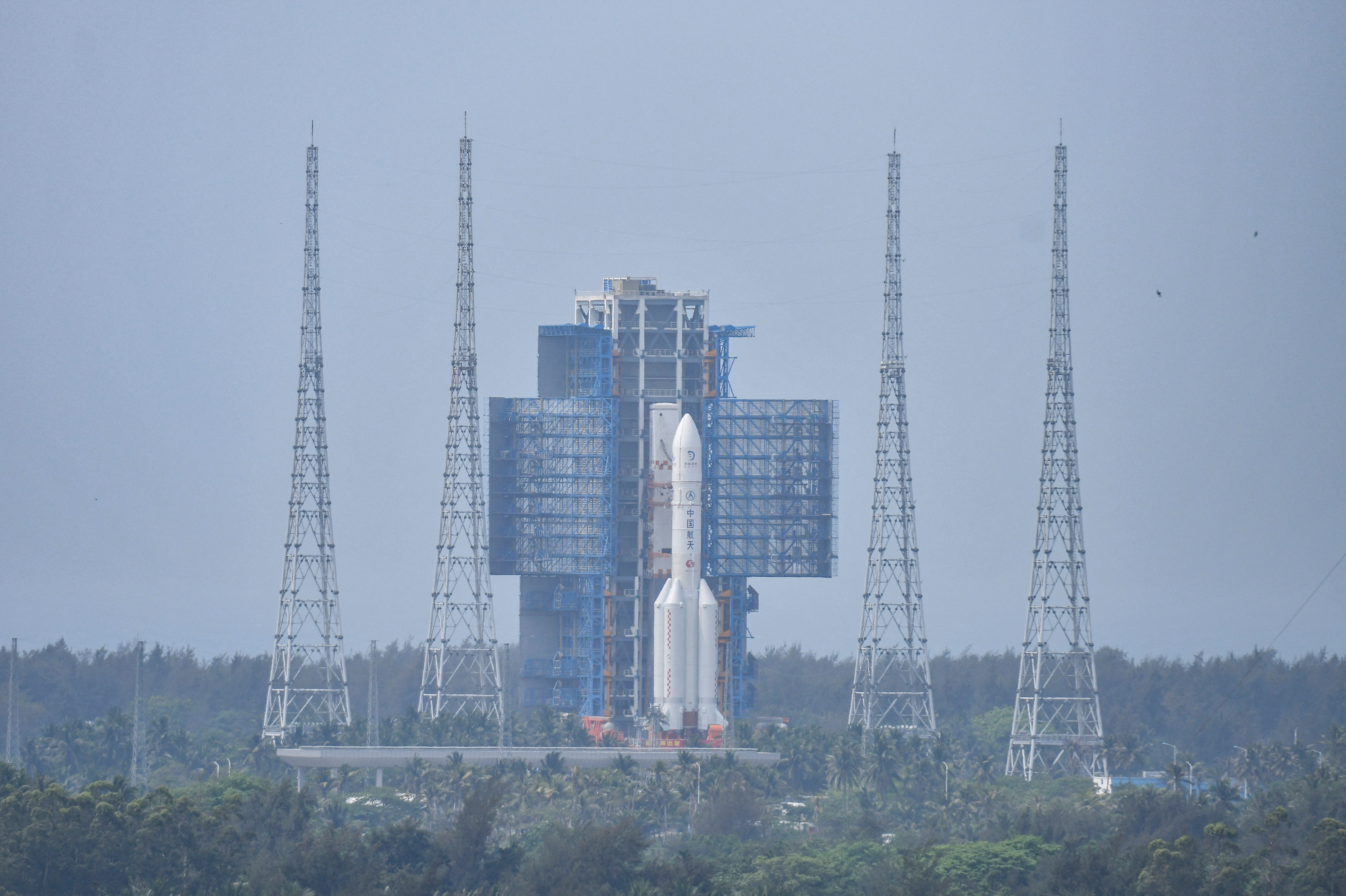
- China expected to launch Chang'e-6 lunar mission this week
- Chang'e-6 to return with soil samples from moon's far side
- Chang'e-6 mission expected to last 53 days
SOUTH POLE AMBITIONS
Sign up here.
Reporting by Albee Zhang and Ryan Woo. Editing by Gerry Doyle
Our Standards: The Thomson Reuters Trust Principles. New Tab , opens new tab

Technology Chevron

Samsung says AI to drive technology demand in second half
Samsung Electronics said on Tuesday it expected demand for artificial intelligence to hold strong in the second half, driving sales of memory chips and tech devices, as it reported a more than 10-fold rise in first-quarter operating profit.

F5 on Monday reported disappointing quarterly sales and gave a downbeat earnings forecast, as it grappled with weak demand for its software products used in cloud and security applications, sending its shares down 10% in extended trading.
- Taiwan News
- Editorial & Opinion
- Bilingual Pages
- All Front Page Taiwan News Business Editorial & Opinion Sports World News Features Bilingual Pages
Tue, Apr 30, 2024 page2
Fu says his china visit was an ‘ice-breaker trip’.
- Staff writer, with CNA
Chinese Nationalist Party (KMT) caucus whip Fu Kun-chi yesterday touted breakthroughs in his leading of a KMT delegation to Beijing, describing the visit as an “ice-breaker trip” that facilitated Chinese tourists being allowed to visit Taiwan again.
At a news conference at the Legislative Yuan, Fu, who led a delegation of 17 KMT lawmakers to Beijing from Friday to Sunday, and met with senior Chinese officials, said China has agreed to resume direct air routes between Taiwan and 30 major Chinese cities.
Currently, there are only 15 airports in Taiwan and China which operate cross-strait flights, fewer than one-quarter of the 61 before the COVID-19 pandemic.

Chinese Nationalist Party (KMT) caucus whip Fu Kun-chi, front center, speaks at a news conference at the Legislative Yuan in Taipei yesterday.
In addition, residents of 20 densely populated cities in China, including the four directly administered municipalities — Beijing, Tianjin, Shanghai and Chongqing — would be allowed to apply for a permit to visit Taiwan from the Chinese authorities online, Fu said.
Fu also mentioned other measures, such as China permitting people from Chinese-controlled Fujian Province to visit Lienchiang County (Matsu) and expanding access to Taiwanese agricultural and fishery products in the Chinese market.
Fu urged the government to respond to China’s request for the resumption of flights, adding that it would enable nearly 50 million residents of China’s Fujian Province to travel to Taiwan.

Democratic Progressive Party caucus members attend a news conference in Taipei yesterday.
The Mainland Affairs Council (MAC) on Sunday said that such arrangements neither adhere to the principle of reciprocal opening, nor conform to the norms of tourism, adding that subsequent decisions would be made by the MAC and other relevant departments.
Travel links between Taiwan and China have been largely frozen for the past three years, partly due to the COVID-19 pandemic.
China halted independent travel to Taiwan on Aug. 1, 2019, citing the poor state of cross-strait relations. It suspended group travel to Taiwan in 2020.
Meanwhile, when asked about 12 Chinese military aircraft crossing the median line of the Taiwan Strait on April 27, Fu yesterday did not respond specifically.
“I want to emphasize once again that this visit by the KMT is aimed at listening to all sectors in Taiwan and consistently advocating for the well-being and contentment of Taiwanese people, while also working toward improving cross-strait relations,” he said.
The Democratic Progressive Party caucus yesterday demanded transparency, asking the KMT lawmakers “to make clear to the public what conditions and concessions were offered in their talks with officials in Beijing.”
The KMT caucus is treating China’s “small favor as a great kindness and great virtue,” DPP caucus secretary-general Rosalia Wu (吳思瑤) said.
Additional reporting by Jason Pan and Hsieh Chun-lin
Most Popular
Aftershocks could last for a year: cwa, us says 41 military personnel in nation, ‘a16’ chipmaking tech to arrive in 2026, tsmc says, mac slams partial lifting of china ban, notes from central taiwan: old habits die hard.
You might also like

Cabinet approves two bills on regenerative medicine
MEDICAL: The bills would also upgrade the status of the Ethical Guidelines Governing the Research of Human Embryos and Embryonic Stem Cell Research to law The Executive Yuan yesterday approved two bills to govern regenerative medicine that aim to boost development of the field. Taiwan would reach an important milestone in regenerative medicine development with passage of the regenerative medicine act and the regenerative medicine preparations ordinance, which would allow studies to proceed and treatments to be developed, Deputy Minister of Health and Welfare Victor Wang (王必勝) told reporters at a news conference after a Cabinet meeting. Regenerative treatments have been used for several conditions, including cancer — by regenerating blood cells — and restoring joint function in soft tissue, Wang said. The draft legislation requires regenerative treatments
By Shelley Shan

Hospital nurses accused of taking photos of patients
POLICE INVESTIGATING: A man said he quit his job as a nurse at Taipei Tzu Chi Hospital as he had been ‘disgusted’ by the behavior of his colleagues A man yesterday morning wrote online that he had witnessed nurses taking photographs and touching anesthetized patients inappropriately in Taipei Tzu Chi Hospital’s operating theaters. The man surnamed Huang (黃) wrote on the Professional Technology Temple bulletin board that during his six-month stint as a nurse at the hospital, he had seen nurses taking pictures of patients, including of their private parts, after they were anesthetized. Some nurses had also touched patients inappropriately and children were among those photographed, he said. Huang said this “disgusted” him “so much” that “he felt the need to reveal these unethical acts in the operating theater

Researcher warns Taiwanese about visiting China
Taiwanese should be mindful when visiting China, as Beijing in July is likely to tighten the implementation of policies on national security following the introduction of two regulations, a researcher said on Saturday. China on Friday unveiled the regulations governing the law enforcement and judicial activities of national security agencies. They would help crack down on “illegal” and “criminal” activities that Beijing considers to be endangering national security, according to reports by China’s state media. The definition of what constitutes a national security threat in China is vague, Taiwan Thinktank researcher Wu Se-chih (吳瑟致) said. The two procedural regulations are to provide Chinese
By Chung Li-hua

China ramping up space power to deter US: expert
WARFARE: The PLA aims to use space-based capabilities to enhance its force projection to make the Indo-Pacific region too costly for the US to protect, experts said China is rapidly building space capabilities to be able to launch precision strikes on Taiwan, the US and its allies, US Space Force leaders said at a recent conference in London. China is developing counterspace warfare capabilities including GPS jamming systems and anti-satellite missiles at “breathtaking speed,” said General Stephen Whiting, commander of the US Space Command. In the past six years, Beijing tripled its number of dedicated intelligence, surveillance and reconnaissance satellites, while rapidly fielding dual-use satellites, Whiting said, adding that the capabilities are honed for detecting movements at sea. The Chinese People’s Liberation Army (PLA) might have already achieved substantial benefits
By Jonathan Chin
- India Today
- Business Today
- Reader’s Digest
- Harper's Bazaar
- Brides Today
- Cosmopolitan
- Aaj Tak Campus
- India Today Hindi
China set to launch spacecraft on round trip to the Moon, return with lunar soil
This will be the first of three missions designed to set the stage for a manned lunar landing and the establishment of a base at the moon's south pole by 2030..
Listen to Story

- The upcoming mission targets the moon's far side
- It is referred to as its "hidden" side due to its permanent orientation away from Earth
- The mission's significance extends beyond technological prowess
China is set to launch the Chang'e-6 mission, a robotic spacecraft aimed at collecting samples from the moon's far side.
This will be the first of three missions designed to set the stage for a manned lunar landing and the establishment of a base at the moon's south pole by 2030.
Scheduled for launch this week, Chang'e-6 will utilise the backup spacecraft from the successful 2020 Chang'e-5 mission, which was the first to bring back lunar samples to Earth in over four decades. The upcoming mission targets the moon's far side, often referred to as its "hidden" side due to its permanent orientation away from Earth, making direct communication impossible.
To overcome this challenge, Chang'e-6 will rely on the Queqiao-2, a relay satellite recently positioned in lunar orbit.
This satellite will facilitate communications for the mission's expected duration of 53 days, which includes an unprecedented ascent from the moon's far side — a manoeuvre never before attempted.
The mission's significance extends beyond technological prowess; it also underscores China's strategic lunar ambitions and its commitment to international cooperation. Despite the absence of collaboration with Nasa, due to US legal restrictions, China has included scientific payloads from France, Italy, Sweden, and Pakistan in the Chang'e-6 mission.
Future missions, Chang'e-7 and Chang'e-8, are set to carry instruments from Russia, Switzerland, and Thailand as they explore the lunar south pole for water resources and begin outpost construction.
Chang'e-6 aims to land in the northeastern region of the South Pole-Aitken Basin, the oldest and largest recognized impact basin on the moon. This area is of particular scientific interest because it has been less affected by volcanic activity that obscures older geological features on the moon's near side. By returning samples from this area, scientists hope to gain insights into the early evolution of the moon and, by extension, the inner solar system.
The mission's success could provide critical data on the moon's composition and geologic history, offering new clues about the celestial body that has captivated human imagination for centuries.
As Leonard David, author of "Moon Rush: The New Space Race," notes, "If successful, China's Chang'e-6 mission would be a milestone-making event. The robotic reach to the Moon's far side, and bringing specimens back to Earth, helps fill in the blanks about the still-murky origin of our Moon."
As global interest in lunar exploration intensifies, with various nations and private entities aiming for the moon, China's Chang'e-6 mission represents a significant step forward in understanding our closest celestial neighbour. Published By: Sibu Kumar Tripathi Published On: Apr 29, 2024
Tesla stock surges 12% on Elon Musk's China Full Self-Driving 'home run'
- Tesla's stock price jumped 12% on Monday as traders reacted to Elon Musk's China trip.
- Musk seems to have won key support for rolling out Tesla's autonomous-driving technology in China.
- The news looks like a "home run" for the electric-car maker, Wedbush's Dan Ives said.

Tesla stock surged at Monday's opening bell as traders reacted to the electric-car maker moving a step closer to winning Beijing's approval for its Full Self-Driving technology in China.
Shares were up 12% to just under $189 shortly before 10 a.m. ET, lifting Tesla's valuation by more than $60 billion, per Business Insider's calculations.
Tesla struck a deal to partner with the Chinese tech giant Baidu for technology associated with autonomous driving and passed a key data-security and privacy requirement, Bloomberg reported.
The announcement came after CEO Elon Musk made a surprise visit to China on Sunday to meet with top officials, including Premier Li Qiang. The Wall Street Journal reported that China's government had signaled to Musk that it would support Tesla's Full Self-Driving rollout.
China is a key market for the US-based EV maker, though it faces intense competition from local rivals such as BYD and XPeng.
Signs of slowing demand in China have dragged on Tesla's stock price in recent months, but shares rallied last week after Musk's company said it planned to launch cheaper models in 2025.
A Wedbush analyst, Dan Ives, called the latest news a "home run" for Tesla and maintained his price target of $275, implying a 64% jump from the stock's Friday close.
"Musk winning FSD approval in the key China market is a watershed moment for the Tesla story in our view," Ives said in a note seen by BI.
"This is a key moment for Musk as well as Beijing at a time that Tesla has faced massive domestic EV competition in China along with softer demand," he added. "While the long-term valuation story at Tesla hinges on FSD and autonomous, a key missing piece in that puzzle is Tesla making FSD available in China, which is now a done deal."
- Main content
- Search Please fill out this field.
- Manage Your Subscription
- Give a Gift Subscription
- BHG Archives
- Newsletters
- Sweepstakes
- Home Improvement Ideas
- DIY Home Electrical Tips & Guides
How to Reset a Tripped Circuit Breaker
Learn how to reset a tripped circuit breaker so you can get the lights back on without calling an electrician.
- Working Time: 5 minutes
- Total Time: 5 minutes
- Skill Level: Beginner
- Estimated Cost: $0
Learning how to reset a tripped circuit breaker is an essential part of living on your own . Just as important is knowing when you shouldn't reset a tripped breaker, as there may be an underlying electrical issue you should address first. Typically, a circuit breaker trips due to overloading the circuit , such as running a hair dryer on a circuit powering several other items. However, there can be more serious causes. Find out how to reset a breaker, the potential causes of a tripped circuit breaker, and ways you can prevent a tripped circuit breaker in the future.
How to Tell a Circuit Breaker Has Tripped
You know a circuit breaker has tripped if your home loses power, but only on a given circuit. The lights might not be working in two adjacent rooms, or none of the power outlets in one room are working.
If your power goes out across multiple rooms or every room in the house, this is likely a bigger problem than a tripped breaker, as isolated circuits shouldn't interfere with one another.
If you suspect a circuit breaker has tripped, the next step is to locate your home's circuit breaker box. The breaker box is where you'll find several breakers, each controlling a circuit in the home. Sometimes, the breakers are labeled with their coordinating circuits, but they often aren't, making it a guessing game. The tripped breaker will be obvious, as it's the breaker that isn't in the "on" position.
Safety Considerations
A circuit breaker isn't only a means of switching a circuit on or off. It's a safety mechanism that automatically cuts the power on a given circuit when an electrical problem arises. A breaker could trip due to damaged wires, damaged wire insulation, loose connections, damaged receptacles, or an overloaded circuit . Restoring the power without first identifying the cause of the tripped circuit can pose a safety risk to you and anyone nearby.
When working around a live circuit breaker box, work with caution. Only touch the switches on the breakers, as other components can shock you. Never touch the electrical box if you're wet or in a damp environment.
What You'll Need
Equipment / tools.
- Eye protection (Optional)
- Flashlight (Optional)
Instructions
How to reset a tripped breaker, turn off everything on the circuit.
As a safety precaution and to prevent overloading the circuit, turn off or unplug everything that's plugged into the tripped circuit.
While this step is not necessary to reset the breaker, it can help determine potential causes of the tripped breaker, such as an overloaded circuit. Plugging items back in individually will help you identify which item is overloading the circuit.
Locate the Tripped Breaker
Open the circuit breaker box and locate the tripped breaker. All normally functioning breakers will be in the "on" position, while a tripped breaker will either be in the "off" position or neutral middle position. Once you locate it, refrain from switching it on.
If you're having trouble finding your breaker box , look for a metal box around eye level, typically located in your basement, garage, utility closet, or similar places.
If the malfunctioning circuit isn't controlled by a breaker in your breaker box, it could be located elsewhere in an electrical subpanel .
There's a chance you'll open the breaker box and find fuses instead of breakers, especially if you live in an older home. In this case, you likely have a blown fuse and will have to replace it to restore power to the circuit.
Inspect the Breaker Box
Thoroughly inspect the inside and outside of the breaker box. Note any abnormal smells, heat, or other signs of burning. Also, look for rust or other damage. If you see anything concerning, don't restore the power. Instead, contact an electrician for further examination.
Reset the Breaker
If the area passes your inspection, attempt to flip the breaker back on. Before doing so, ensure you and your surroundings are dry, and keep your hands away from the wiring or the back of the electrical panel.
If the breaker switch is in the middle position, you need to move it to the "off" position before turning it back on. If the breaker doesn’t turn on even after moving it to the "off" position, you likely have a faulty breaker.
While not a regular occurrence, breakers can spark when flipped into the "on" position. Wearing eye protection can prevent serious injury.
Test the Circuit
Working one item at a time, restore power to the various items powered by the trouble circuit.
If the circuit works up to a certain number of items, there is a good chance you are overloading it by powering too many items. In this case, move one or more items to another circuit and test it again.
What to Do If a Circuit Breaker Trips Again
If the circuit breaker continues to trip after the reset, there is likely an issue you haven't noticed or may be unable to see. In this case, you should further inspect the wiring and receptacles tied to the circuit (with the power off). If you are unable to locate the problem or require further assistance, call an electrician.
Related Articles
- Anniston/Gadsden
Popular cruise line cancels trip with guests already on board: What happens next?
- Updated: Apr. 29, 2024, 6:57 a.m. |
- Published: Apr. 29, 2024, 6:38 a.m.

FILE - In this June 20, 2016 file photo, the Royal Caribbean cruise ship Empress of the Seas heads out of PortMiami, in Miami Beach, Fla. Royal Caribbean International notified guests aboard Radiance of the Sea the ship will not continue on an already-abbreviated Alaska sailing. Instead, the voyage was canceled and guests must leave the ship and will be sent home. AP
- Leada Gore | [email protected]
Guests onboard a popular cruise line were told their trip was canceled and they were being sent home despite already being on board the vessel.
Royal Caribbean International notified guests aboard Radiance of the Sea the ship will not continue on an already-abbreviated Alaska sailing. Instead, the voyage was canceled and guests had to leave the ship and be sent home, CruiseHive.com reported.
The ship was set to depart Vancouver, British Columbia on Friday and guests were permitted on board. It was announced the ship would spend two days in port undergoing repair with a revised departure date of Sunday, April 28 before returning May 3 as planned.
Later, however, an announcement was made the trip was being canceled due to repairs for a technical issue impacting its propulsion, the website reported, and guests had to leave the ship Sunday by 4 p.m. local time.
“As you are aware, our teams have been vigorously working to have Radiance of the Seas prepared to set sail on our shortened April 26th sailing,” a letter given to passengers in their staterooms read, according to reports by unofficial cruise site RoyalCaribbeanBlog.com reported. “Despite our best efforts, circumstances beyond our control have delayed our sailing further. As a result, we’ll regrettably have to cancel our April 26th, 2024 cruise.”
READ MORE: U.S. travel alert: Cruise line cancels more visits to popular Caribbean destination
What happens to the guests?
Guests will receive a 100% refund on their fare and a 100% future cruise credit for a later sailing. The cruise line opened internet service free of charge to allow for easier travel planning and offered a free open bar until debarkation, reports indicated.
Cruisers who booked flights through Royal Caribbean had their flights automatically rescheduled. The cruise line is also reimbursing any travel change fees up to $250 for domestic travel and $400 for international travel and up to $250 for hotel costs, per statement, per night, for two nights.
READ MORE: U.S. travel alert: Do not travel to this Caribbean nation, popular spot for cruise ship stops
The ship first developed propulsion difficulties last week during a repositioning cruise from Los Angeles to Vancouver, causing several stops to be scrapped to accommodate the slower speed.
If you purchase a product or register for an account through a link on our site, we may receive compensation. By using this site, you consent to our User Agreement and agree that your clicks, interactions, and personal information may be collected, recorded, and/or stored by us and social media and other third-party partners in accordance with our Privacy Policy.
Pair of giant pandas set to travel from China to San Diego Zoo under conservation partnership
SAN DIEGO — A pair of giant pandas will soon make the journey from China to the U.S., where they will be cared for at the San Diego Zoo as part of an ongoing conservation partnership between the two nations, officials said Monday.
The San Diego Zoo Wildlife Alliance said its caretakers recently visited China to meet the giant pandas, Yun Chuan and Xin Bao, ahead of their planned trip to Southern California. An exact date for the handoff hasn’t been set.
Yun Chuan, a mild-mannered male who’s nearly 5 years old, has “deep connections” to California, the wildlife alliance said. His mother, Zhen Zhen, was born at the San Diego Zoo in 2007 to parents Bai Yun and Gao Gao.
Xin Bao is a nearly 4-year-old female described as “a gentle and witty introvert with a sweet round face and big ears.”
“Our conservation partners in China shared photographs and personality traits of Yun Chuan and Xin Bao, but meeting them in person was so special,” said Dr. Megan Owen, the alliance’s vice president of conservation science. “It’s inspiring as people from around the world come together to conserve, protect, and care for these special bears, and we can’t wait to welcome them to San Diego.”
The San Diego Zoo Wildlife Alliance has a nearly 30-year partnership with leading conservation institutions in China focused on protecting and recovering giant pandas and the bamboo forests they depend on.
The Associated Press
- Skip to main content
- Keyboard shortcuts for audio player
He missed a chance to be the first Black astronaut. Now, at 90, he's going into space
Scott Neuman

Ed Dwight poses for a portrait in February to promote the National Geographic documentary film The Space Race during the Winter Television Critics Association Press Tour in Pasadena, Calif. Chris Pizzello/Invision/AP hide caption
Ed Dwight poses for a portrait in February to promote the National Geographic documentary film The Space Race during the Winter Television Critics Association Press Tour in Pasadena, Calif.
Edward J. Dwight Jr. has waited a long time for his ride into space.
In the 1960s, he seemed poised to become America's first Black astronaut. That dream was never realized. Now, at age 90, he's about to finally get his shot, aboard a Blue Origin rocket.
The opportunity is "a curiosity more than anything else," Dwight says. "They called me up and asked me if I was interested. And of course I said yes."

The 1st Black Woman To Pilot A Spacecraft Says Seeing Earth Was The Best Part
While Dwight won't be the first African American in space — that honor went to Guion Bluford Jr. in 1983 — he will be the oldest person to go there, edging out (by a few months) Star Trek actor William Shatner , who flew aboard a Blue Origin rocket in 2021.
For many his age, a journey into space would seem unthinkable. Dwight says he's ready to go. He points out that the rigors of his upcoming flight won't be much different from what he experienced as a test pilot in the Air Force. "I've pulled more G's than any person on Earth," he says with a wry smile. "I've been high enough to see the curvature of the Earth. ... I've been doing things like that most of my life."
Space health expert Dorit Donoviel says the 11-minute flight of Blue Origin's New Shepard rocket means many of the concerns about the long-term effects of orbital and deep-space missions won't come into play.
"The main thing we worry about is the G forces," says Donoviel, director of the Translational Research Institute for Space Health at Baylor College of Medicine.

Air Force Capt. Edward J. Dwight Jr., the first African American selected as a potential astronaut, looks over a model of the Titan III-X-20 Dyna-Soar combination during a visit to Air Force headquarters in the capital in November 1963. Getty Images/Bettman Archive hide caption
Air Force Capt. Edward J. Dwight Jr., the first African American selected as a potential astronaut, looks over a model of the Titan III-X-20 Dyna-Soar combination during a visit to Air Force headquarters in the capital in November 1963.
Those G forces cause blood to drain from the head, and that's an issue for anyone launching into space, regardless of age. However, she points out that the seats aboard Blue Origin's rocket are angled at 20 or 30 degrees. "As you're experiencing the G-forces, you're getting it through the chest, which is not affecting your head," Donoviel says. "It's distributed through the chest, which really shouldn't matter very much."
And then there's the landing. The crew capsule will separate from the booster and come down under a set of parachutes — emitting a last-minute retro thrust to reduce speed to about 2 miles per hour to cushion the impact. "It's not even a controlled crash. It's a crash," Donoviel says. Still, she anticipates no issues.
No launch date set
Blue Origin has not announced a launch date yet. But Dwight and his crewmates will train for two days before liftoff at the company's Launch Site One in western Texas, not far from the Mexico border.
The company, owned by billionaire Jeff Bezos, declined to disclose the per-passenger cost of the flight, but says Dwight's seat is being sponsored by Space for Humanity and Blue Origin, with additional support from the Jaison and Jamie Robinson Family Foundation . (Jaison Robinson, who flew on a previous Blue Origin flight, is on the NPR Foundation Board of Trustees.)
Leland Melvin, a retired NASA astronaut who flew two space shuttle missions to the International Space Station, says it will be good to see Dwight finally "get his due" all these years after he first trained for space.

My Big Break
From touchdowns to takeoff: engineer-athlete soared to space.
Dwight sees his upcoming spaceflight as the "climax to an interesting story."
His own story, that is. One of the earliest chapters begins at an airfield in Kansas City, Kan. As a child, Dwight's fascination with aviation led to odd jobs cleaning aircraft owned by wealthy flyers. But even then, he had greater ambitions. "I told them I didn't want their nickels and dimes for cleaning airplanes anymore," he says. "I wanted to fly." At age 8, he got his first flight.
Dwight was equally interested in art and earned a scholarship to pursue his passion after high school. His father would have none of it. Art wasn't a real career, he insisted. Dwight should study engineering instead, so he enrolled at a junior college, receiving an associate's degree in 1953, the same year he enlisted in the Air Force.
After finishing primary flight training, he was commissioned as a second lieutenant. Dwight also got a bachelor's of science in aeronautical engineering from Arizona State University. Discrimination was an ever-present reality in the armed forces at the time, but as a skilled pilot, he made captain.
Kennedy wanted a Black astronaut
That's when President John F. Kennedy — eager to link his administration's push for civil rights to the country's early space exploration efforts — asked for a Black astronaut.
At the time, it was test pilots who became astronauts, and there were no Black test pilots. So, Dwight was invited to attend the Air Force's newly opened Aerospace Research Pilot School (ARPS).
But when he got the invitation letter, he almost threw it out, Dwight recalls. His Air Force peers "got a big laugh out of it," telling him that "all those guys have swagger, and it's a club," he said, referring to the all-white astronaut corps. They said, "They are not going to let you get in that club."
"And, of course, they were right," he says.

'Black In Space' Explores NASA's Small Steps And Giant Leaps Toward Equality
It was a huge career gamble. Dwight's father, who played baseball in the Negro Leagues, was strongly opposed. His mother, though, changed her son's mind. "She said, 'You are going to do this' because she was thinking it would be uplifting the race and racial pride," he says.
Upon entering the flight-test program, Dwight experienced immediate pushback that he says was rooted in racism. He says Chuck Yeager, the famed test pilot who ran the school, resented having to accept a Black candidate. (Yeager, who died in 2020, wrote in his memoir that his only issue was Dwight's piloting skills, which he described as "average.")
Once on the astronaut track, Dwight became a minor celebrity, especially in the Black community. He appeared on the cover of magazines such as Ebony and Jet . But he also endured taunts of "Kennedy's boy" because of the president's support.
Kennedy's 1963 assassination nearly derailed Dwight's training, he says. Days after the president's death, "Lo and behold, I had orders in my mailbox shipping me out of the country," he says.
Attorney General Robert F. Kennedy, the president's brother, intervened to keep him in the program, according to Dwight. He stayed in the Air Force for a few more years, but it became increasingly clear that he would not be selected as an astronaut. "When I found out it wasn't going to happen, that's when I left the program," he says. "I just packed my bags and left."

One of Ed Dwight's sculptures in Battle Creek, Mich., depicts escaped slaves along the Underground Railroad being led to freedom by Harriet Tubman and local abolitionist Erastus Hussey. Carlos Osorio/AP hide caption
One of Ed Dwight's sculptures in Battle Creek, Mich., depicts escaped slaves along the Underground Railroad being led to freedom by Harriet Tubman and local abolitionist Erastus Hussey.
After the Air Force, Dwight, who eventually settled in Denver, became a computer systems engineer for IBM, later opened a restaurant and worked as a real estate developer before being drawn back to his childhood love of art . Despite having little formal training, he was commissioned in 1974 to create a sculpture of Colorado's first Black lieutenant governor, George Brown.

Black History Month 2024
A child's dream to 'drive' a space shuttle propels him toward a historic nasa mission, from would-be astronaut to sculptor.
From there, his reputation as a sculptor blossomed. In 1977, he earned a master's of fine art in sculpture from the University of Denver. He specializes in sculpting historic African American figures. Among his more notable pieces are busts of jazz greats Dizzy Gillespie and one of Louis Armstrong on display at the National Museum of American History.
Melvin, who is African American, says when he met Dwight, he didn't know much about his backstory. "I got a copy of his book and I read some of the stuff that he had done," he says. "He reminded me of Katherine Johnson ," the NASA mathematician who led an all-woman group of "computers," who made vital orbital calculations for the agency's early crewed spaceflights. Their story was later featured in Hidden Figures, the book and 2016 film.
Dwight and Melvin became close friends. In recent months, they have worked together on The Space Race , a documentary released last year about the contributions and experiences of Black astronauts. Dwight's own story is prominent in the film.

NASA astronauts Victor Glover and Leland Melvin pose with Ed Dwight for a portrait to promote The Space Race in February at The Langham Huntington Hotel in Pasadena, Calif. Chris Pizzello/Invision/AP hide caption
NASA astronauts Victor Glover and Leland Melvin pose with Ed Dwight for a portrait to promote The Space Race in February at The Langham Huntington Hotel in Pasadena, Calif.
"He's not only funny, he's self-deprecating," Melvin says of Dwight. And one quality stands out. "He's got grit."
"But the other thing that his mother taught him was grace," he says. So, when being an astronaut didn't work all those years ago, "he gracefully pivoted to doing something else. It was just as impactful — just as impactful, especially in the Black community, which was his sculpture."
"He will now get his chance to do some zero-G floating and look at the planet from another vantage point," Melvin says.
Correction April 25, 2024
An earlier version of this story omitted Blue Origin as a sponsor of the flight that will take Edward J. Dwight Jr. into space.
- blue origin

IMAGES
VIDEO
COMMENTS
The adjustment can be set from 20 to 70% of the maximum breaker rating. In compliance with NEC® 230-95 (A), no trip point setting exceeds 1200 amps. The ground fault pickup is divided into three sections; .1s, .2s, and .4s. This feature adds a time delay of .1, .2, or .4 seconds to the breaker's trip when a ground fault occurs.
The 5 basic tripping settings for circuit breakers you should know about are: Continuous amps. Long time delay. Short time pick up. Short time delay. Ground fault pick up. Choosing the correct circuit breaker and tripping settings will protect you from financial loss in the event of a power outage.
A short-time delay (STD) setting on a circuit breaker can negate the function of protecting the circuit components. A low voltage power circuit breaker with a short-time delay and without instantaneous trip, permits a fault to flow for the length of time of the STD setting, which might be 6, 12, 18, 24 or 30 cycles.
release element which contains a nonadjustable means that is set to trip a circuit breaker instantaneously above a predetermined value of current. 9 - FRAME: an assembly consisting of all parts of a circuit breaker except an interchangeable trip unit. 10 - FRAME SIZE: a term applied to a group of circuit breakers of similar physi-cal configuration.
An adjustable trip circuit breaker lets you adjust the parameters for currents and short circuits. While there are electronic circuit breakers that allow for several customizations, you can change the setting on adjustable trip circuit breakers manually. This type of circuit breaker has several main components—contacts, an arc extinguisher, a ...
When you need to intentionally trip a breaker on your own to perform work on a circuit, you can plug an appliance into an outlet that is a part of the designated circuit, or if available, you can also just turn on a light. After you switch the breaker for that circuit to the "off" position, you will see the appliance or light power off as well.
If you suspect a short circuit, unplug your appliances and check the wires for melted coverings. You might also notice a burning smell coming from the outlet. Call in a professional electrician to find the source of the problem. 3. Circuit Overload. Circuit overloads are the most common reason that a breaker trips.
Short Circuits: The common reason for the tripping of a circuit breaker is the short circuit. When a hot wire comes in contact with a neutral wire a huge amount of current passes through the circuit. With a huge current flowing through the circuit more than its rating, the circuit catches up the fire or is damaged.
Devices charging slowly. Electrical outlets not working. Flickering lights. Scorch marks on outlets and light switches. If a circuit breaker keeps tripping in one room, homeowners can test for ...
To address this, start by unplugging or turning off devices on the affected circuit to reduce the load. Then, firmly push the breaker switch to the off position and then back to the on position. If it continues to trip or won't reset, it's crucial to consult a qualified electrician to diagnose and fix the problem.
Circuit breaker switches either have two or three settings. Those with two settings will either be switched on or off. Those with three settings have an "on," "off" and "neutral" (center) position. ... If the breaker doesn't trip again, try plugging in appliances one by one. If the breaker trips, you have located the source of the ...
Step 1. Look for the amperage notation on the breaker switch. This will generally be 15 or 20. Also look for the voltage notation, which may be on the breaker switch as well, and will be 120 or 240. If you cannot locate the voltage, assume that breakers that take up one panel slot are 120 volts and breakers that take up two slots are 240 volts.
Due to the typical interval between long-time pickup settings on an electronic trip breaker, in many cases, the next higher setting on an 800A or smaller breaker will be lower than the next higher rating of the standard fixed-trip breaker. For example, if the cable ampacity where to be 258A, the code allowed next higher fixed-trip breaker ...
The MCCB had long-time, short-time, and instantaneous trip elements. An investigation determined the instantaneous setting is set at the minimum (1,000A). According to the coordination study, it should have been adjusted to 4,000A. A decision was made to confirm the setting on two other 500A breakers providing power to two other patient floors.
Note: For circuit-breakers equipped with non-adjustable overcurrent-trip relays, Ir = In. Over current protection time setting (tr): It is denoted by tr. In this dial, we set the time limit for the over current protection as we said above. In our case we have set 0.5 sec. It means, the MCCB allows 320+ Amps for just 0.5 sec only.
Quck answer To calculate circuit breaker trip settings, follow these steps: 1. Determine the maximum current the circuit can handle. 2. Calculate the short circuit current available at the point of installation. 3. Determine the desired trip time for the circuit breaker. 4. Use the manufacturer's trip curve to find the trip multiplier for the
For thermomagnetic breakers, the trip rating is a fixed value, and you'd have to replace the breaker if you needed a different trip setting. For electronic trip breakers, which are common in higher amp ratings, there could be the option for an adjustible trip breker, either by replacing the rating plug, or configuring the rating settings on it.
Hence a trip nominally set at 10,000A rms is sensitive to 14,100A peak. Allowing for a 10% tolerance the 10,000A rms setting means the trip will not actuate if the peak current is below 12,690A (10,000X1.41X0.9). Using the knowledge that the that an upstream electronic trip is sensitive to peak current will allow the circuit breaker to have its
the left knob with available breaker amperage trip settings. For example, a 1400A breaker cannot be set to 900A, the closest available options would be 800A and 1000A. Changes to this setting should only be made by qualified personnel per the direction of the Engineer of Record. Q: What models of DAS breakers do we offer in Power Mod?
The adjustable magnetic trip setting is factory-set at Lo for Mag-Gard Motor Circuit Protectors. For PowerPacT H- and J-frame, and TeSys BV4 Motor Circuit Protectors, where applicable, the Full Load Amp Setting (FLA) is factory set to the lowest setting. The instantaneous trip setting (Im) is factory set to the Auto 1or the lowest instantaneous ...
China will send a robotic spacecraft in coming days on a round trip to the moon's far side in the first of three technically demanding missions that will pave the way for an inaugural Chinese ...
Fu says his China visit was an 'ice-breaker trip'. Chinese Nationalist Party (KMT) caucus whip Fu Kun-chi yesterday touted breakthroughs in his leading of a KMT delegation to Beijing, describing the visit as an "ice-breaker trip" that facilitated Chinese tourists being allowed to visit Taiwan again. At a news conference at the ...
China is set to launch the Chang'e-6 mission, a robotic spacecraft aimed at collecting samples from the moon's far side. This will be the first of three missions designed to set the stage for a manned lunar landing and the establishment of a base at the moon's south pole by 2030. Scheduled for launch this week, Chang'e-6 will utilise the backup ...
Tesla's stock price jumped 12% on Monday as traders reacted to Elon Musk's China trip. Musk seems to have won key support for rolling out Tesla's autonomous-driving technology in China.
Open the circuit breaker box and locate the tripped breaker. All normally functioning breakers will be in the "on" position, while a tripped breaker will either be in the "off" position or neutral middle position. Once you locate it, refrain from switching it on. If you're having trouble finding your breaker box, look for a metal box around eye ...
AP. Guests onboard a popular cruise line were told their trip was canceled and they were being sent home despite already being on board the vessel. Royal Caribbean International notified guests ...
The San Diego Zoo Wildlife Alliance said its caretakers recently visited China to meet the giant pandas, Yun Chuan and Xin Bao, ahead of their planned trip to Southern California. An exact date ...
Edward J. Dwight Jr. has waited a long time for his ride into space. In the 1960s, he seemed poised to become America's first Black astronaut. That dream was never realized. Now, at age 90, he's ...